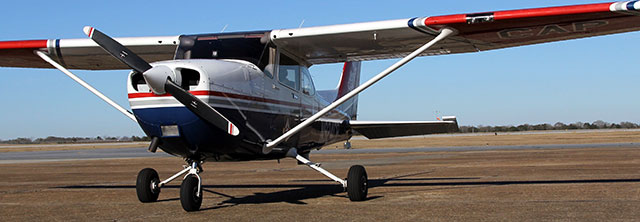
The Civil Air Patrol continues to modernize its single-engine piston fleet with an eye on inspiring the next generation of aviators and related professionals, and the deal announced Feb. 2 to purchase 21 new Cessna 172 Skyhawks is very much a part of that.
Each of the new Skyhawks coming off the Cessna line in Independence, Kansas, will get a fresh coat of CAP colors and a tow hook, but few other modifications from the stock 172s.
CAP Senior Director Gary Schneider, who handles national fleet logistics for the organization, said the new Skyhawks will be delivered between March and June and distributed around the country. Unlike other CAP aircraft which are significantly modified for the search-and-rescue, border-patrol, drug-interdiction, and aerial-imaging missions, the Skyhawks will be outfitted primarily to tow gliders and support the ongoing mission to offer youth cadets firsthand experience with flight. The CAP also works with schools and others in the education field to promote science, technology, engineering, and math success, STEM education being a shared priority. And much like AOPA, which has developed new programs for youth in recent years, the Civil Air Patrol is logging an increasing number of summer encampments during which cadets get a chance to fly gliders or powered aircraft, and logged nearly 200,000 cadet orientation flights in 2012 and 2013, the most recent years for which data is available.
“We have a common goal there, too,” Schneider said. “We’re trying to influence the young people to pursue a career.”
The Skyhawks’ shifting mission is part of a larger shift now underway, driven in part by technology. Schneider said advances in emergency beacons, particularly the integration of GPS functionality in emergency locator transmitters and portable devices, have reduced demand for the search portion of search and rescue. CAP’s all-volunteer flight crews logged 619 searches in 2013, down nearly 12 percent from the prior year, though the number of lives saved reported in CAP’s annual reports increased from 32 to 44, and historically averages higher still. CAP, the U.S. Air Force Auxiliary, logged a 46-percent increase in “other state support missions” in 2013, including border surveillance and drug interdiction, and a smaller number of missions that contribute directly to national defense. Schneider said CAP aircraft recently played the role of flight restriction violators, giving fighter pilots some intercept practice leading up to the Feb. 1 Super Bowl.
In all, CAP estimates that the services of its cadets and volunteer pilots saved taxpayers $155 million in 2012 and the same amount in 2013, while the organization’s overall budget was held virtually unchanged at $57 million, the bulk of which (about 80 percent) comes from the federal government. The organization also has increased its fundraising in recent years; contributions and fundraising account for about 7 percent of total CAP revenue.
Schneider said the Skyhawk refurbishment program also continues, with work underway overhauling and refurbishing dozens of older aircraft.
“We expect to be able to get at least another 10 years out of the aircraft” in the refurbishment program, Schneider said. By then, the organization may well have deployed a fleet of unmanned aircraft systems to perform many of the organization’s core functions, though Schneider said those programs are starting small, operating tethered and untethered unmanned aircraft in very limited numbers.
“We’re hesitant to get into it too quickly,” Schneider said of unmanned systems, noting that while they are cheap to operate, there remain many hurdles before unmanned aircraft systems can be successfully integrated into the airspace and used for search and surveillance operations outside of the small number of designated test areas. “We’re going to crawl before we walk on that one.”
Still, cadets have already demonstrated aptitude with the systems, and tend to learn them much faster than their adult mentors did, so it is likely to be a significant part of CAP’s long-term future.
Meanwhile, the manned aircraft fleet is gradually being shifted to aerial imagery missions including post-disaster damage assessment. Demand for sophisticated camera and imaging services is expected to continue to increase.
“I believe we’ll probably continue to fly at about the same level even though we’ve seen a reduction in the actual search mission,” Schneider said.



